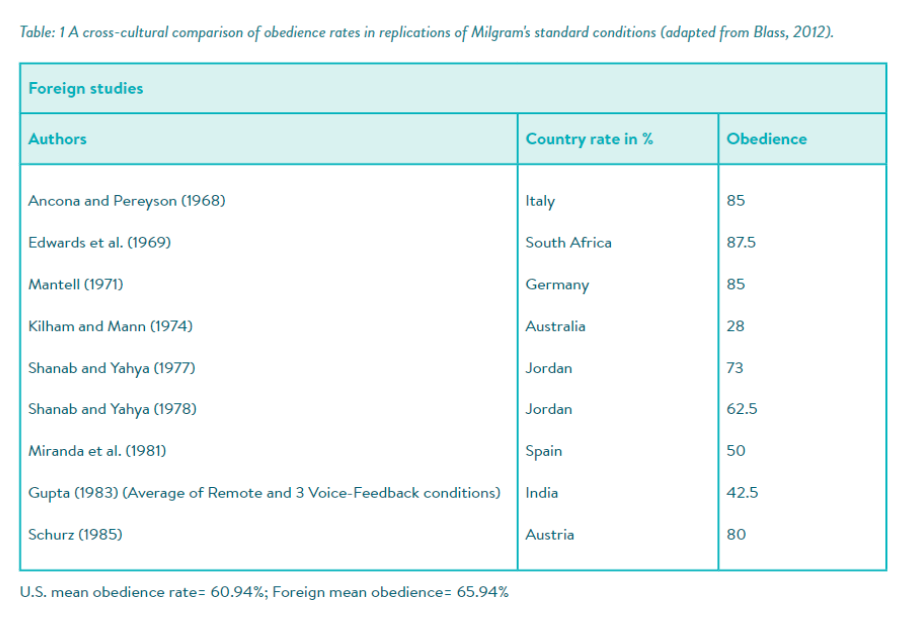Section 1. Obedience and Conformity
Aim of Social Psychology
The aim is to be able to control the influences on us in everyday life
Social Influences:
Relationships
Age
Gender
Race
Religion
Specifics:
Clothing
Makeup
Social media
Vaping
Drinking
The Continum of Social Influence:
Obedience - Compliance - Conformity - Independece - Assertiveness - Defiance
Low Self Monitor =
Disposition: Personality Characteristics
Situational Factors: Surrounding People or Events
Experimental:
Manipulated IV
Control and Experimental Group
Can control of extraneous variables
Random Allocation
Observational:
Naturally Occuring IV
No control over extraneous variables
No Random Allocation
Qualitative:
No IV
Experiment = Ad vs Dis
Can control variables
Can manipulate IV
Low ecological validity
Unethical sometimes
Expensive to carry out
Can replicate again
High Causality
Obedience is a form of social influence when an individual responds to a direct order, usually from an authority figure
Terms Associated with Obedience:
Personal Responsibility
Peer Support
De-individuation
Prestige or status of the Authority figure
Legitimacy of the Authority figure
Proximity to the Authority figure
Status of the location
Milgram’s Study:
→ Teacher (participant) - presenting the words to the learner and if the answer is wrong, punishment occurs. The electric shocks increase as more errors occur up to 450 volts
→ Learner (confederate) - purposely gets the answers wrong. As part of the act, they ask the teacher to stop the punishment and becomes more agonised.
→ Authority Figure - white lab coat for status, next to the teacher, encouraging them to continue with the questions by saying things like “Please continue, you have no choice, you must go on, it is critical you continue, the experiment requires you to continue”
→ Results: 65% of participants (teachers) continued to the highest level of voltage (450 volts) whereas all managed to reach 300 volts. The general consensus from experts beforehand is that only 4% of participants would go to 300 volts.
→ Anonymity occurred in Milgram’s experiments, as the teacher was unable to see the learner being shocked, a factor decreases de-individuation
→ Personal responsibility was decreased and placed on the authority figure, perhaps explaining why so many people continued to administer high level shocks
Replications of the Study:
I.V: Gender differences 9testing dispositional individual differences)
D.V: Compliance
Outcome: Gender did not seem to affect compliance much (but women reported higher distress)
I.V: Conformity (what other subjects did)
D.V: Compliance
Hypothesis: If others complied, the [higher / lower] chance that the subject complied
Proximity of the Authority Figure:
I.V: Proximity of the authority figure to the teacher
D.V: Compliance
Hypothesis: The closer the authority figure, the [higher / lower] the percentage of compliance
I.V: The closeness of the learner (the person receiving shocks)
D.V: Compliance
Hypothesis: The nearer the learner was perceived to be to the teacher, the [higher / lower] the compliance.
Legitimacy / Prestige of the Authority Figure:
I.V: Status of the authority figure
D.V: Compliance
Hypothesis: The lower the perceived status, the [higher / lower] the compliance.
I.V: The clothing of the authority figure (white lab coat)
D.V: Compliance
Hypothesis: The more formal / scientific the clothing the [higher / lower] the compliance
De-individuation:
De-individuation means that the person loses a sense of identity and behaves in different ways from normal. Often it’s innocent behaviour but not always.
Hypothesis: The more individuation, the [higher / lower] the compliance
Analysis of Chart:
Australia has the least percentage of obedience scoring at 28% whereas South Africa has the highest percentage of obedience of 87.5%. Most countries score around 70% which is the European and African countries. Australia is governed by a democracy which calls for individuality.
Importance of Social Influence on Obedience:
When acting as a group, the influence of others upon yourself cause obedience to be higher or lower depending on the situtation
Situational vs Dispositional Factors in Regards to Obedience:
Situational factors are more prominent in regards to obedience than dispositional factors

Definition of Conformity:
A form of social influence where individuals yield to group pressure
‘A change in behaviour or belief as a result of real or imagined group pressure’
Types of Conformity:
Compliance
A public change in behaviour to be more like the majority, however, internally no change in original beliefs, values or ways to act
Shallowest level of conformity
Identification
Taking on the views of individuals or groups we admire (changes public and private behaviour and beliefs only when with a certain group, keeping own opinion when you are on your own)
Middle level of conformity
Internalisation
A true change of beliefs → believing a group is right in their actions, so one will adjust their behaviours and beliefs accordingly
Deepest level of conformity
Why do people conform?
Normative Social Influence
When a person conforms to be accepted or belong to a group
Compliance and Identification (short term changes)
Informational Social Influence
When a person conforms to gain knowledge or because they believe that someone else is ‘right’
Internalisation (long term changes)
Individual Characteristics
Culture, low status, low and high self monitors
→ High Self Monitor: Form of impression management (masking) where the person organises how other people view them. A H.S.M almost constantly watches other peoples behaviour and tries to be like them
→ Low Self Monitor: When you value their individual beliefs more than the opinions of the group
What factors affect the level of conformity?
Individual differences
Size of the Group → increased
Lack of Group Unanimity (agreement) → decreased
Difficulty of Task → increased
Answer in Private → decreased
Anonymity → decreased
Status of Majority Group → increased